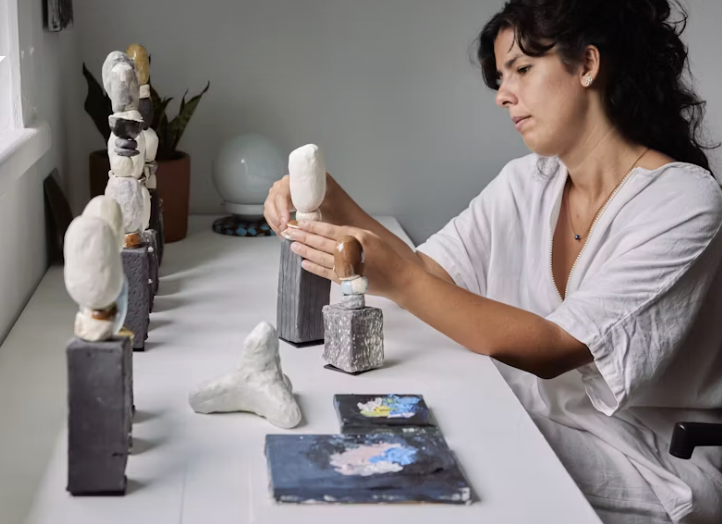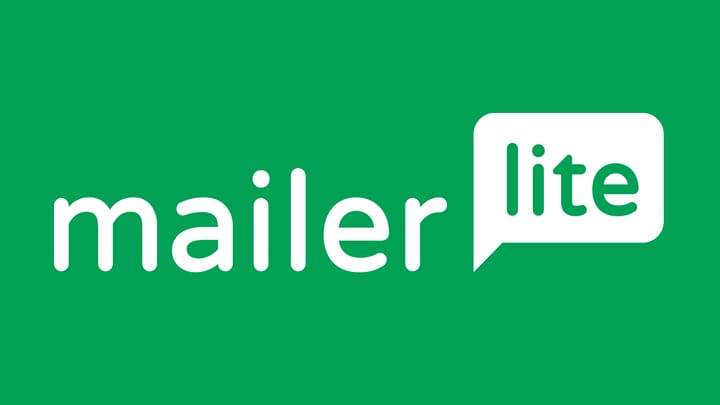Email Marketing for Creatives: Expanding Your Art Business Digitally
Collectors who really want to buy your work might miss your latest piece because they looked at their phone at the wrong time. This is all different because of email marketing.

Most artists don't know this: you're sitting on a goldmine of possible sales, and Instagram and Facebook are the ones who decide who can see it.
Take a moment to think about it. You spend hours making beautiful things, posting them online, and maybe a few of your followers actually see them. That is not a business plan; it is merely relying on the benevolence of the algorithmic forces for success today. Collectors who really want to buy your work might miss your latest piece because they looked at their phone at the wrong time.
This is all different because of email marketing. You can reach someone directly if they give you their email address. No algorithm deciding if they get your message.
No fighting with cat videos for attention. You, your art, and someone who has already said, "Yes, I want to hear from you."
Building Your Email List from Scratch
Let's start with the basics: you need people on your list. But here's where most artists mess up: they just slap a "subscribe to my newsletter" box on their website and wonder why nobody signs up.
People need a reason. Something valuable. Something they can't get anywhere else.
Here's what actually works as lead magnets:
- Free PDF guides like "5 Tips for Starting Your Art Collection"
- Desktop wallpapers created with your artwork
- Exclusive previews of new pieces before they hit your website
- Behind-the-scenes video tutorials of your process
Where to put signup forms:
- Your homepage (not just the footer)
- After blog posts when readers are engaged
- Pop-up that appears after 30 seconds of browsing
Going to an art fair or exhibition? Bring an iPad or even a simple clipboard. When someone spends ten minutes talking to you about your process, ask if they'd like to be notified when you release new work. Most will say yes.
One crucial rule: never buy email lists. Never add someone without permission. Purchased lists have terrible engagement rates and damage your reputation.
Understanding Different Types of Art Buyers
Not everyone on your list wants the same thing. Some people can only afford a $50 print right now. Others are looking to spend $10,000 on an original piece.
Key audience segments to create:
- Casual admirers: Love your process videos; might buy prints or smaller pieces
- Serious collectors: Want first dibs on originals and exclusive access
- Corporate buyers: Looking for commission work or bulk purchases
- Fellow artists: Engaged with technique discussions and creative journey content
Start simple with just two groups: people who've bought from you and people who haven't. That alone will dramatically improve your results.
Creating Emails People Actually Want to Read
Here's what nobody tells you: the emails that sell the most aren't the ones that say "buy my stuff."
People buy art because of the story behind it. Your emails should give them those things.
Share your process. Send an email showing your messy studio, your color mixing experiments, and the piece that didn't work out. Talk about what inspired your latest series. This is the stuff that makes people care.
Balance matters. If every email is "here's my new piece, please buy it," people tune out.
Follow this rough ratio: for every promotional email, send two or three that just provide value or build connection.
Subject line approaches that get opened:
- "The painting I almost destroyed (and why I didn't)"
- "3 mistakes I made in the studio this week"
- "You're the first to see this (new collection preview)"

Email Campaigns That Actually Work for Artists
The welcome series (3-5 emails over 7-10 days):
- Email 1: Welcome them, set expectations for what they'll receive
- Email 2: Your story—what drives your work
- Email 3: Showcase your most popular pieces
- Email 4: Explain your process and what makes it unique
- Email 5: Clear guide on how to purchase from you
New collection launches need their own sequence. Start building anticipation two weeks before release. Tease the theme. Share work-in-progress shots. Give your email subscribers first access before you announce it anywhere else.
Regular studio updates keep you top of mind. Once a month, send a newsletter about what you're working on, what's inspired you lately, and maybe one piece that's available. Keep it conversational.
Abandoned cart emails are essential if you sell online. When someone adds a piece to their cart but doesn't buy it, automatically send them a reminder within 24 hours. Often they just got distracted.
The Technical Side (Made Simple)
You need an email service provider. This is the platform that sends your emails and manages your list. Popular options include Mailchimp, ConvertKit, and Maileroo(of course!). Pick one that fits your budget and doesn't confuse you.
If you sell art online, connect your email platform to your e-commerce system. This lets you automatically tag customers and track who's buying what.
Automation saves you massive amounts of time. Set up workflows once, and they run forever. Someone subscribes? The Welcome series starts automatically. Someone buys a piece? They get tagged as a customer.
Make absolutely certain your emails look appealing on phones. Most people access email on mobile.
Tracking What Matters
You need to watch a few key numbers:
- Open rate: Are people opening your emails? Aim for 20-40% for art businesses.
- Click-through rate: Are people clicking your links? This shows if your content is interesting.
- Conversion rate: How many people actually buy? Track this over time.
Simple A/B tests to try:
- Test two different subject lines to determine which one generates more opens.
- Short email vs. longer storytelling email
- Single large image vs. gallery of smaller images
- Sending on Tuesday morning vs. Saturday afternoon
Set realistic goals. This is a long game. You're building relationships that pay off over months and years, not overnight.

Advanced Strategies for Serious Growth
VIP collector program benefits:
- First look at all new work (24-48 hours before anyone else)
- Special pricing or payment plans on high-value pieces
- Invitations to private studio viewings
- Complimentary shipping on all purchases
Use pre-launch access strategically. Before you officially release a new collection, give your email subscribers 24-48 hours of exclusive access. This rewards loyalty and creates scarcity.
Build serious anticipation for major shows. If you're exhibiting at a significant fair or having a gallery opening, start the drumbeat early. Weekly updates counting down. Sneak peeks of what you're showing.
Staying Legal and Professional
Legal checklist for email marketing:
- Only email people who explicitly opted in
- Include your physical business address in every email
- Make the unsubscribe link obvious and functional
- Honor unsubscribe requests within 10 business days
- Write honest subject lines (no deceptive clickbait)
Have a clear privacy policy on your website explaining what you do with email addresses. When someone unsubscribes, let them go gracefully. Don't take it personally.
Final Thoughts
Email marketing isn't a magic bullet. It won't turn you into a millionaire overnight. But it is the single most reliable way to build a sustainable art business that doesn't depend on social media's whims.
Action steps to implement this week:
- Choose an email service provider and create your account
- Design one simple lead magnet (PDF guide or wallpaper)
- Add a signup form to your website homepage
- Write and schedule your first welcome email
- Commit to a realistic sending schedule (weekly or biweekly).
Then keep going. One email a week. Or even one every two weeks. Just stay consistent. Share your work, tell your stories, and build those relationships. Over time, you'll create something incredibly valuable: a group of people who care about your art and are ready to buy when you have something new.
That's not just a marketing list. That's your community. That's your business. And unlike followers on someone else's platform, it's actually yours.
Stop hoping the algorithm will be kind. Start building something you control. Your future collectors are waiting to hear from you.



